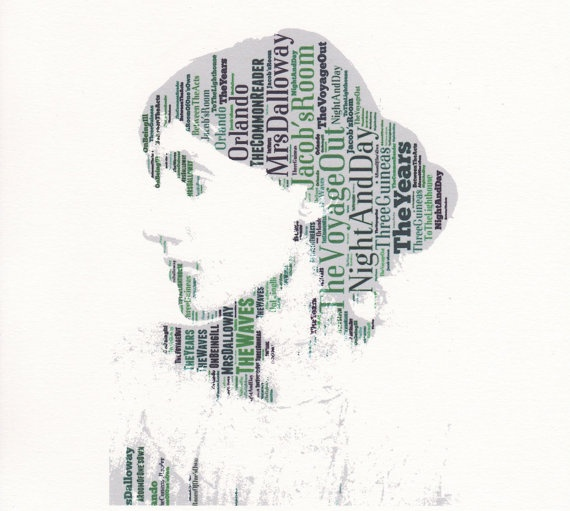Woolf’s Mrs. Dalloway (1925)  constituted the inauguration of a different style of writing and the first attempt at penning a new mode of fictional narration. This British author started to write her novel in 1922, and it took her two more years to complete it (Zwerdling 94); she stated in her personal journal that her fourth novel was part of a “tunneling process, by which I tell the past by instalments” (Woolf 60). The novel allowed her to explore the mind of the characters from different perspectives, and it could be considered that the importance is placed on language and the inner world of the character rather than in external actions and events. Hence, taking into account the previous statement, it can be considered that “death” operates at two different levels in the novel: psychological and physical.
constituted the inauguration of a different style of writing and the first attempt at penning a new mode of fictional narration. This British author started to write her novel in 1922, and it took her two more years to complete it (Zwerdling 94); she stated in her personal journal that her fourth novel was part of a “tunneling process, by which I tell the past by instalments” (Woolf 60). The novel allowed her to explore the mind of the characters from different perspectives, and it could be considered that the importance is placed on language and the inner world of the character rather than in external actions and events. Hence, taking into account the previous statement, it can be considered that “death” operates at two different levels in the novel: psychological and physical.
The first appearance of Clarissa in the story presents the reader with a character who constructs an internal and partially conscious image of herself as dead. Thus, death can be seen as a structuring motif that is introduced to the reader in the very first page of the novel, and that as the plot is developed, it determines the lives of the characters. One of the crucial moments in which death takes a central role is when Clarissa discovers that her husband is about to have lunch with Lady Bruton but she is excluded from the meeting. Even though Clarissa’s love of life is prevalent in the construction of the character’s personality, and she clearly shows an appreciation of the world around her and especially “London; this moment of June” (Woolf n.p.), her exclusion from the meeting results in a disruption of the balance that characterizes her public image.
If Lady Bruton’s lunch provokes Clarissa’s metaphorical death, the party makes her face the possibility of actual death for the first time. The novel describes a day marked by suicide in which Clarissa’s decision of living is always challenged by the possibility of death; however the character’s love of life wins the game and strengthens her identity. Septimus’ suicide functions as an epiphany that reveals Clarissa’s longing for truly living. Septimus’ suicide creates a symbolic relationship between both characters: both are the same, they see themselves drowned by society, and they both face the possibility of escaping through death. Clarissa only becomes aware of the possibility of escaping once she regards herself and Septimus as equals.
The whole day in Mrs Dalloway, which was originally called The Hours is marked by the chiming of Big Ben, and functions as a constant reminder of time running out. It is important to stand out that, in the first version of the novel, Clarissa’s day ended with her death, and that original idea of her suicide remains enclosed in the story Woolf decided to publish. Septimus has always been considered Clarissa’s sacrificial double or Doppelgänger, and the lives of both characters are marked not only by the chiming of time, but also by the chiming of death (Friedman 211).
Even if you haven’t read the novel, the film adaptation The Hours may be a good introduction to the world of Clarissa. The postmodern approach of the film will allow you to get to know not only some of the main characters of the story, but also the life of the author. Moreover, the 1997 adaptation will provide you a faithful interpretation of the actual story.
Here you have the trailers of both movies:
Mrs Dalloway 1997
The Hours 2002
Here you can find the references used to write this post:
Bell, Vereen. “Essays: Misreading Mrs. Dalloway.” The Sewanee Review. 114.1 (2006): 93. Print.
Friedman, Alan Warren. Fictional Death And The Modernist Enterprise. Cambridge: Cambridge University Press, 1995. Print.
Henke, Suzette. “Mrs Dalloway”. English Literature in Transition 1880-1920 35.3 (1992): 384-385.
Webb, Caroline. “Life After Death: The Allegorical Progress of Mrs. Dalloway.” MFS Modern Fiction Studies 40.2 (1994): 279–298.
Woolf, Virginia. A Writer’s Diary. [1953]. London: The Hogarth Press, 1959.
Woolf, Virginia. Mrs Dalloway. Project Gutenberg. Web. 10 March 2015.
Zwerdling, Alex. “Woolf’s The Hours”. English Literature in Transition 1880-1920 41.1 (1998): 94-98.
